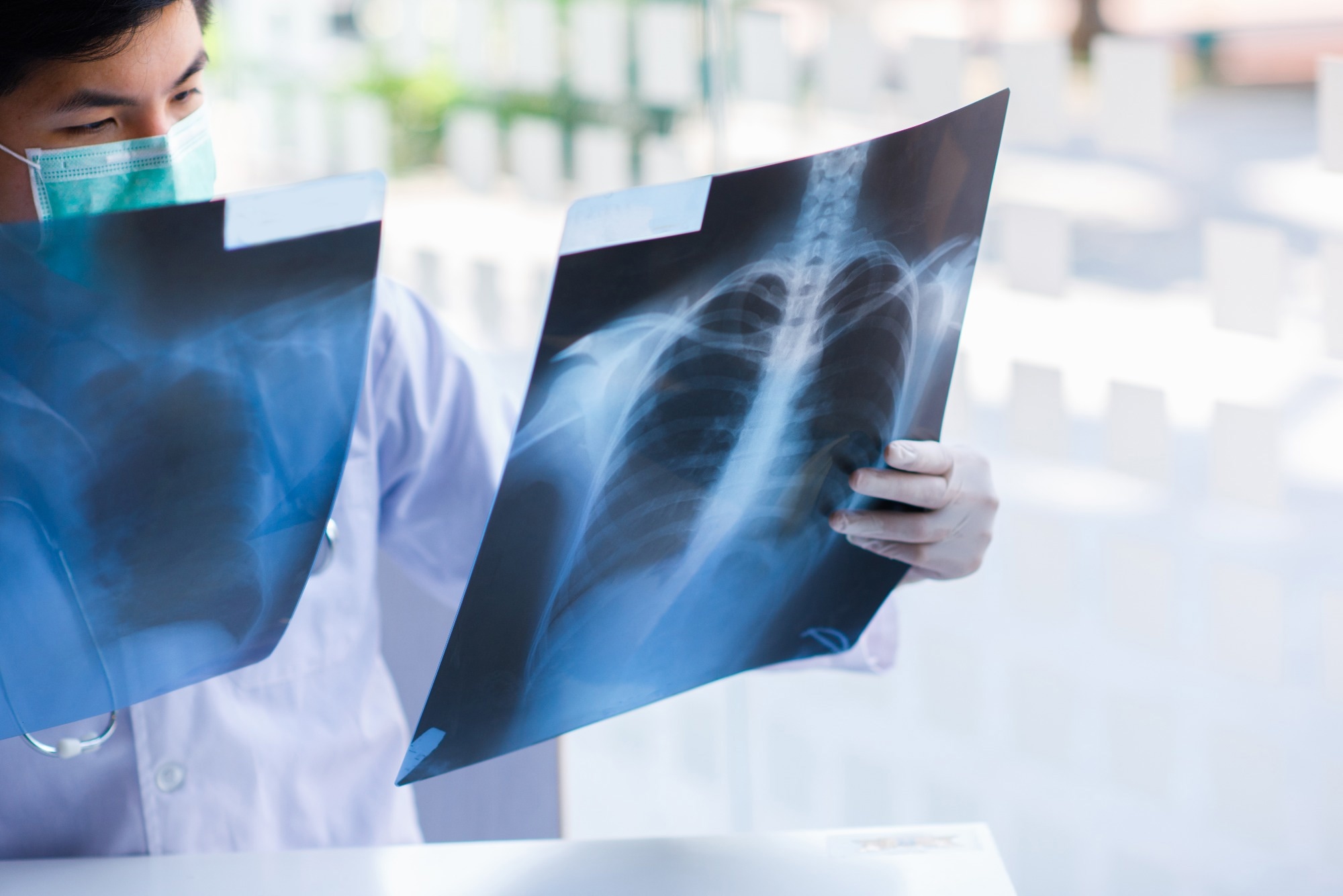A recent study published in the Scientific Reports Journal examined immune responses in treatment-naive individuals with early-stage active pulmonary tuberculosis (TB) without clinical TB history. The researchers identified a potential immune biomarker associated with pulmonary TB in active patients compared to controls.
 Study: Identification of immune biomarkers in recent active pulmonary tuberculosis. Image Credit: dokurose/Shutterstock.com
Study: Identification of immune biomarkers in recent active pulmonary tuberculosis. Image Credit: dokurose/Shutterstock.com
Background
TB is a significant global public health concern due to its long-term effects, disabilities, fatalities, contagiousness, and insidious onset. Pakistan has an alarming incidence rate of 264/100,000 TB cases, ranking sixth out of 30 high-burden countries.
Mycobacterium tuberculosis (Mtb) is the primary causative agent of TB. Early immune responses against Mtb are crucial for confined infection, with cytokines and chemokines influencing inflammatory and anti-inflammatory responses.
Active TB is linked to higher pro-inflammatory and lower anti-inflammatory responses compared to chronic TB. Only a few transcriptional studies have examined unstimulated pulmonary TB peripheral blood mononuclear cells (PBMCs) for early detection of Mtb infection, with most studies using active, latent, or drug-treated cases.
The present study aimed to analyze naïve PBMCs from recently diagnosed active pulmonary TB patients within four to six weeks of clinical manifestations.
About the study
This study enrolled 51 recently infected active pulmonary treatment-naïve TB patients and 25 healthy uninfected controls from Karachi, Pakistan. Recruitment was based on physical examination, clinical symptoms, and laboratory assessments.
The study used sputum analysis, Acid-fast Bacilli microscopy, GeneXpert testing, Mantoux tuberculin skin test (TST), and chest X-ray for patients with clinical TB symptoms. Fast immunochromatographic (IST) and ELISA tests were used for human immunodeficiency virus (HIV) testing, ensuring precise diagnosis and therapy.
The researchers selected 31 active pulmonary TB patients aged 15-55 years, excluding those with long-term, secondary, or relapsed Mtb, relapsed or extra-pulmonary TB, HIV, hepatitis C virus (HCV), and hepatitis B virus (HBV) infections.
Blood samples from 31 TB patients and 25 controls were collected and processed within 15 minutes to isolate PBMCs using Ficoll Histopaque. The study used commercially available beta globulin (B2M) primers for complementary DNA (cDNA) preparation.
The RT2 Profiler polymerase chain reaction (PCR) Array was used to analyze 84 inflammatory genes, including chemokine, cytokine, and receptors. Three internal controls and five reference genes were used for quality control and normalization. Real-time PCR was performed according to the manufacturer's instructions.
Data analysis involved gene fold change, statistical significance, receiver operating characteristic (ROC) curve analysis, and visualization using GraphPad Prism and Qiagen software. Functional annotation and gene ontology were completed using ShinyGO.
Results
This study analyzed early transcriptional changes of unstimulated PBMCs from recently infected active pulmonary naive TB patients and controls. Most genes exhibited minimal to average expression patterns, but a few distinct gene clusters showed markedly different expression patterns between groups.
Patients with active TB displayed considerable differential expression patterns for 12 genes compared to controls. The cytokine transcripts that showed significant differential expression in unstimulated PBMCs from active TB patients were Interleukins-27 (IL-27), IL-15, IL-24, IL-2RA, and transforming growth factor beta (TGFβ).
Studies have demonstrated that particular T- helper cell type 1 (Th1) or T- helper cell type 2 (Th2) responses are the main drivers of cytokine profiles in naive and stimulated PBMCs from TB patients at various phases of disease.
A unique messenger RNA (mRNA) profile in active pulmonary TB patients was identified by comparing cytokines, transcription factors, and immune markers. Out of 84 transcripts, 5 gene signatures were identified, including upregulated IL-27, signal transducer and activator of transcription 1 (STAT1), toll-like receptor 4 (TLR4), and downregulated IL-24 and Cluster of differentiation 80 (CD80).
These signatures best discriminate between active pulmonary TB and uninfected controls of an area under the curve (AUC) value ranging from 0.9 to 1.
The authors used the bioinformatics approach to identify differentially expressed genes (DEGs) and their strong interactions among immune-related genes, such as IL-27, STAT1, and TLR4, involved in pro-inflammatory responses. The most distant genes were TGFβ and prostaglandin D2 receptor 2 (PTGDR2).
DEGs are primarily associated with critical biological processes such as immune activation, cell proliferation, and regulation, primarily abundant in cytokine activity and signaling pathways. According to the authors, more translational studies are needed to validate the current research findings within Pakistan and across different countries.
The immune profile observed in unstimulated PBMCs was not based on classical cytokines, but increased expression of IL-27, STAT1, IRF1, TLR4, and IL-15 may be crucial in the early pathogenic detection of TB. Further validation through translation studies is crucial in determining their utility as biomarkers.
Conclusion
This study identified unique molecular immune signature transcripts using unstimulated PBMCs (IL-27, STAT1, IRF1, TLR4, IL-15, IL-2RA, IL-24, TGF, CD28, CD80, nuclear factor of activated T-cells 1, and PTGDR2) that distinguish active pulmonary TB patients from uninfected controls.
Investigating the translation profile of these transcripts is crucial for the functional characterization and validation of biomarkers for early-stage TB infection.
Future works must focus on building global data on immune profiles of different ethnicities, developing medical tests for TB diagnosis at early stages, and devising treatment methods based on immunotherapies to avoid immune-related complications in TB patients.